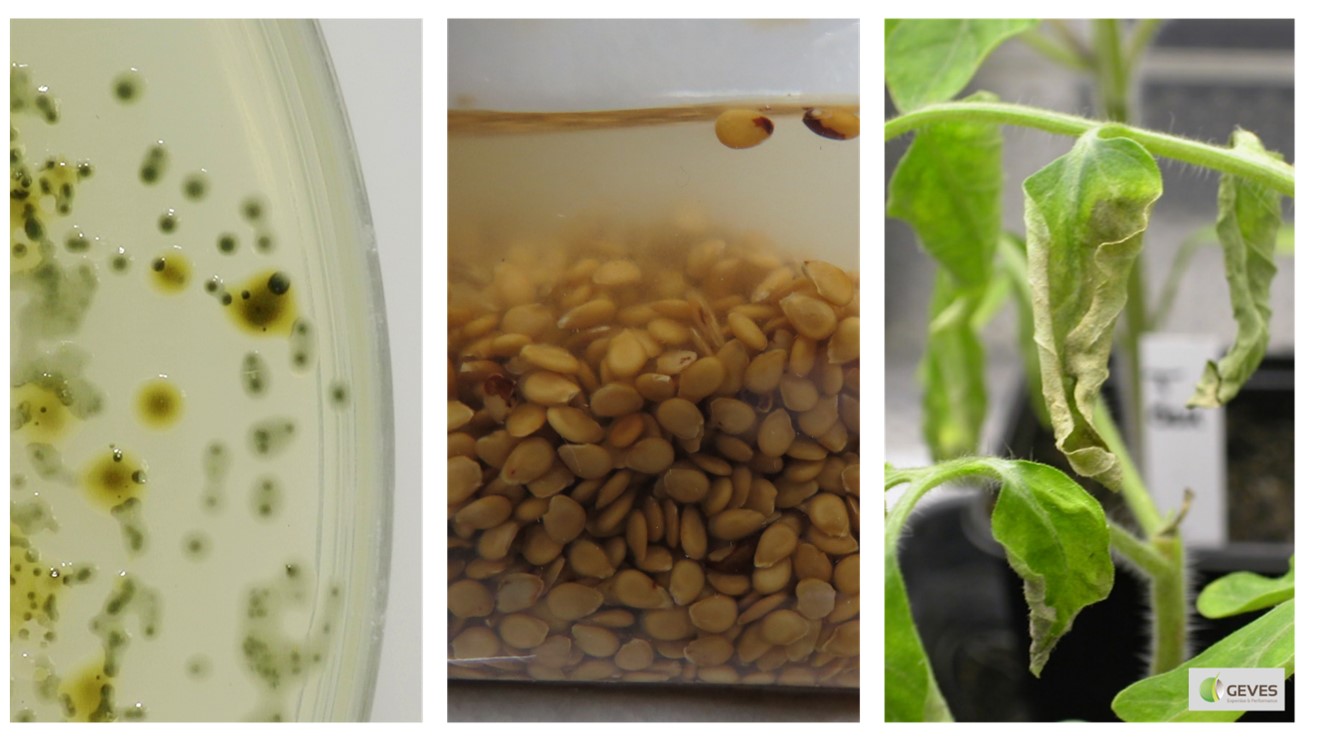France
Nvember 8, 2022

Bacterial canker caused by the bacteria Clavibacter michiganensis subsp. michiganensis (Cmm) is one of the most devastating diseases on tomato plants. This vascular pathogen enters plants through natural openings or through wounds. It proliferates in the xylem and can infect tomato seeds. The transmission of this bacteria to seeds facilitates the spread of the disease, especially through international seed trade.
The EU Plant Health Regulation includes several measures to control the dissemination of pests within the European Union. Tests are performed in each EU Member by approved laboratories or by the NRL, which is responsible for proposing methods to be officialized by the agricultural ministry. Several NRLs have been designated in France on different mandates. The GEVES pest detection unit is responsible for mandates corresponding to regulated non-quarantine pests on seeds.
In this context, the GEVES method M-GEVES/SV/MO/006 for the detection of Cmm on tomato seeds was officialized by the Ministry on September 30th 2022 (https://info.agriculture.gouv.fr/gedei/site/bo-agri/instruction-2022-740).
This qualitative method includes a first step of extraction and isolation of suspect bacteria on semi-selective media, then a second step of identification of suspect colonies by qPCR followed by a third step of confirmation by a plant pathogenicity test. The process followed in this method is identical to the ISHI method, except for SE-PCR .
The previous official method (ANSES MA049 v4) presents the same work flow, except for the confirmation part by qPCR. Indeed, in this GEVES method the qPCR confirmation step is performed with two duplex qPCRs: PTSSK/Wu and MVS21/Wu described in the ISHI-Veg method. These new qPCRs present the advantage of reducing the risk of false-negative results by using an internal amplification control to ensure that DNA extraction and amplification were successful.
The officialization of this method is the result of collaborative work within the GEVES pest detection unit.